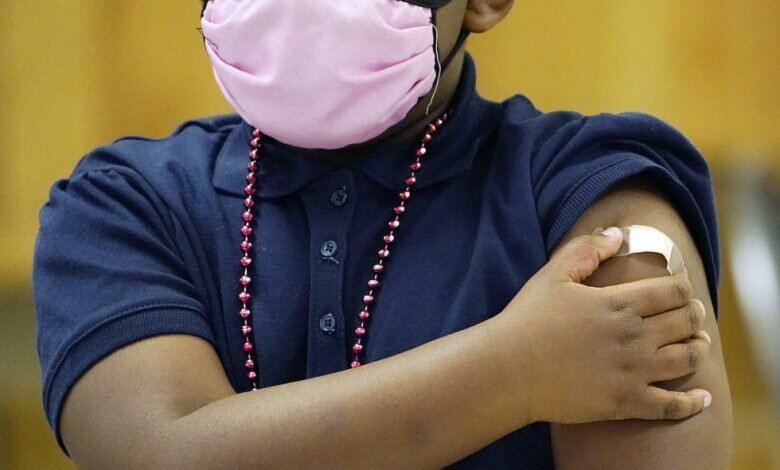US sees risk of rationing COVID supplies without more funding

WASHINGTON (AP) – The White House is planning “serious” contingencies that could include rationing supplies of vaccines and treatments this fall if Congress does not approve more money to fight COVID-19.
In public comments and private meetings on Capitol Hill, White House coronavirus coordinator Dr Ashish Jha paints a darker picture of how the US may be forced to abandon the many advances made against the coronavirus in the past two years and here Even the most vulnerable may face shortage of supplies.
Biden administration officials have been warning for weeks that the country has spent nearly all of the money in the US$1.9 trillion rescue plan that was devoted directly to the COVID-19 response.
A small pool of money remains, and the administration is faced with important decisions about how to spend it. This means difficult decisions, such as whether to use it to secure the next generation of vaccines, to protect high-risk populations or to prioritize the supply of highly effective treatments that reduce the risk of serious illness and death. reduce dramatically.
According to the administration, the decision could be made in the coming week, as the White House faces an imminent deadline to order vaccines and treatments before other countries overtake the US in accessing supplies.
Jha warns that without more money, vaccines will be harder to come by, tests will once again be scarce, and therapeutics that are helping the country weather the current omicron-driven rise in cases without a corresponding increase in deaths. can be sold overseas. before Americans can reach them.
“I think if this happens we will have to lose a lot of unnecessary lives,” Jha said last week. “But we are looking at all the scenarios and planning for all of them.”
He said the administration was “getting too much into the landscape-planning business to make sure we know what might happen next so that we can plan for it and obviously put it before Congress.”
Jha, who declined to make a specific projection on the potential loss of life, has become the face of the Biden administration’s efforts to persuade Congress to approve an additional $22.5 billion for the COVID-19 response.
“The scenarios we are planning are for things like this if Congress doesn’t give us money and we don’t have enough vaccines,” Jha told AP in an interview on May 12. “We run out of treatment. We don’t have enough tests. What might things look like? Obviously, it’s a pretty dire situation.”
Already, domestic production of the test is slowing, workers have begun to lay off. In the coming weeks, Jha said, manufacturers will sell the equipment and “get out of this business,” leaving the US once again dependent on foreign suppliers for rapid testing.
As COVID-19 cases continue to rise, the FDA authorized the first of its kind over-the-counter COVID-19 test. (CNN, LabCorp, Cincinnati Children’s Hospital)
Drug manufacturers and the Food and Drug Administration, meanwhile, are working on evaluating next-generation vaccines, potentially including those targeted at the major omicron strain. But getting them ready before the expected case increase in the fall means placing orders now, as they take two to three months to produce.
Jha had said this week that the US was yet to initiate talks with drugmakers due to paucity of funds.
“We’ve had some very preliminary talks with the producers,” he said. “But the conversations around it have not started yet, partly because we are waiting for resources.” He added: “The truth is that other countries are in talks with manufacturers and are starting to step up their talks.”
He said the US doesn’t have enough money to buy additional booster vaccines for whoever wants it. Instead, the supply of those vaccines may be limited to only the most vulnerable – not unlike the chaotic early days of the COVID-10 vaccine roll-out.
“Without additional funding from Congress, we would not be able to buy enough vaccines for every American once these new generation of vaccines come out in the fall and winter,” he said.
And while the US has built up a stockpile of the antiviral pill Paxlovid, which has been widely effective in reducing serious illness and death, it is running out of money to buy new doses — or other, even more, effective ones. Treatments that are in the final stages of development.
“If we don’t get more resources from Congress, what we will find in the fall and winter is that we will find a time where Americans can see their friends in other countries – in Europe and Canada – with access. These treatments that Americans will not have,” Jha said.
Congress’s deal for a nearly $10 billion slimmed-down COVID-19 response package fell through in March because of the Biden administration’s plan to lift virus-related restrictions on migration across US borders. But a federal judge on Friday blocked that plan, just days before it took effect on Monday.
There’s no guarantee of quick action on Capitol Hill, where lawmakers — Republicans in particular — have become newly wary about deficit spending. On Thursday, a $40 billion measure to aid restaurants struggling during the pandemic failed on those grounds. GOP lawmakers have also objected to additional funding for the global pandemic response, and called for any new virus response funding to come from the economic relief money unspent in the $1.9 trillion rescue plan.
Due to paucity of money, the administration is preparing to put the blame on the culprits if the difficult consequences of this fall are revealed. Still, it could be dangerous for Biden, who has struggled to keep his promise to voters to get the pandemic under control.
Copyright 2022 The Associated Press. All rights reserved.



